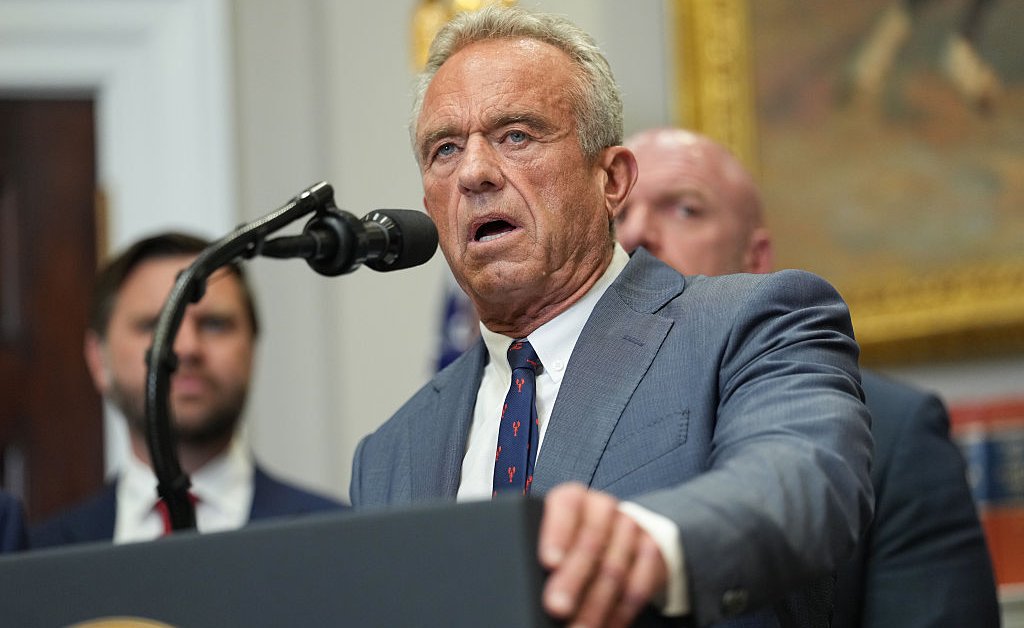For nearly 18 years, Corrine Hendrickson has run a family daycare out of her home in rural Wisconsin, navigating the low pay and long hours because she loves the job.
But at the end of August, before a new school year begins, she’s shutting down Corrine’s Little Explorers for good.
With the disappearance of federal and state subsidies that kept her afloat for the last few years, she says, the model no longer works, and she doesn’t want to have to choose between raising rates or taking a pay cut. She’s not alone: in Wisconsin, other childcare centers are closing ahead of the new school year.
“We’re getting to an inflection point,” she says. “I think enough of us are going to close that they’re going to have to do something.”
Across the country, childcare centers are struggling as they never have before. A perfect storm of rising costs, worker shortages, and the expiration of federal and state grants makes it extremely difficult for these businesses to operate.
Childcare has long been in crisis. Overhead costs like buildings and liability insurance are expensive, and to take care of young kids, centers need a lot of staff, which means they have to spend a lot on payroll. But they also can’t charge too much money, or families will drop out.
“Childcare is a textbook example of a broken market,” said Janet Yellen, back in 2021 when she was Secretary of the Treasury.
Read More: Why So Many Women Are Quitting the Workforce
But for all the struggles of childcare providers in recent years, the pandemic provided an unlikely source of hope. The American Rescue Plan included $24 billion for a Child Care Stabilization program that helped 220,000 centers keep paying wages, benefits, rent, utilities, and other costs. Another $15 billion went to help expand access to childcare.
Some of that funding expired in Sept. 2023; the rest expired one year later. And while some states were able to move around federal funds or pass temporary legislation to financially support childcare facilities, that funding is expiring in much of the country.
“It was already a non-sustainable business model, and it got even worse,” says Julie Kashen, senior fellow and director for women’s economic justice at the Century Foundation, a left-leaning think tank. “The pandemic funding really helped prop it up, but ultimately turned into a bridge to nowhere.”
Indeed, Corrine Hendrickson said she was actually most solvent during the pandemic; the federal funding even allowed her to hire an extra substitute employee. But, she says, she had been thinking of getting out of the childcare business leading up to the pandemic. She only makes a profit of $20,000 a year, which is an extremely low salary for all the work she does. When it became evident that neither the federal nor state government was going to continue to support childcare providers in Wisconsin, she says, she decided to close her business.
The end of funding appears to be leading to many closures. North Carolina, for example, was able to stretch its federal pandemic dollars through June 2024. But after that, 43 centers across the state closed, according to Candace Witherspoon, director of the division of child development and early education in North Carolina. The state was able to release some stopgap funding that lasted through March 2025, but when that ended, even more programs closed. The state has seen 158 programs shutter since the beginning of the year, she says.
Read More: ‘People Are Going to Die’: Cuts Leave Domestic Violence Support Groups Reeling
The federal funding allowed many centers to raise pay from $11 an hour to $14, Witherspoon says, but even the higher rate is not enough to attract and retain workers when fast-food restaurants and other businesses pay considerably more. About half of childcare providers in the state aren’t able to offer health insurance for their workers, and about 43% of childcare workers in the state are on some form of public assistance like Medicaid and food stamps.
Yet demand for childcare is high. “North Carolina is in crisis because many of our parents are being forced to leave the workforce” since they can’t find care for their children, Witherspoon says. In North Carolina, there’s only one infant and toddler spot for every five families applying for care.
When childcare centers close or parents are unable to find a spot for their children, one parent—usually the mother—often drops out of the workforce to care for the kids. Between the second quarter of 2023 and the third quarter of 2024, the number of people who reduced their hours to part-time or who left the labor force altogether due to childcare rose 43%, according to the Federal Reserve Bank of Kansas City.
One analysis of the childcare stabilization funds dispersed during the pandemic found that they helped the mothers with young children stay in the workforce. About 26% of the money spent to stabilize childcare actually ended up back in the government’s coffers through tax receipts.
As federal and state dollars expire, the childcare business is getting even tougher. Inflation is driving up costs like rent and insurance. Labor is becoming more expensive, and providers are facing more competition from other businesses that can pay better. And roughly 20% of the childcare workforce is made up of immigrants, which means that the Trump Administration’s deportation campaign is affecting some workers. One childcare provider in Seattle, for instance, was recently detained by ICE.
Read More: Positive Economic Data Is Still Hiding Bleak Reality for Many Families
The cost of childcare now exceeds the price of college tuition in 38 states and Washington, according to an analysis conducted by the Economic Policy Institute, a left-leaning think tank.
Meanwhile, the median wage in early care and education falls below 97% of other occupations, according to the Center for the Study of Child Care Employment at the University of California, Berkeley. The median wage is $13.07 an hour, but ranges from $10.60 in Louisiana to $18.23 in Washington, D.C.
For many providers, raising prices is not an option. Already, prices have grown by 29% since 2020—faster than overall inflation, according to Child Care Aware, an advocacy group.
“If I raise tuition, will I lose too many families to stay afloat? If I don’t raise tuition, will I be able to stay afloat?” says Meghann Carrasco, the founder and executive director of Seedlings to Sunflowers, a nonprofit childcare provider in Maine. The center used the pandemic funding to stay open for all but two months during the pandemic, and is now struggling because its Pre-K program is under-enrolled.
The center raised prices 16% this year, the most it has ever raised tuition, and lost some families who couldn’t afford it, Carrasco says. Even with the tuition increase, Seedlings to Sunflowers was only able to stay open because it embarked on a fundraising campaign in its community, securing $25,000 in interest-free loans and donations.
“The amount of programs closing daily is more than we’ve ever seen,” Carrasco says.
Read More: Why So Many Seniors Can’t Afford Long-Term Care
Most providers say that without federal or state funding, they do not have a long-term future. Federal funding for childcare was close to becoming a reality in 2021, when the House passed a child care solution in the Build Back Better Act, but it was stripped from the next version of the bill, which became the Inflation Reduction Act. Democrats in Congress introduced a bill in April 2025 that would increase federal spending on childcare, but it’s unlikely to go anywhere, especially in a political climate where some Republicans are backing policies that encourage more mothers to stay at home.
For now, says Kashen of the Century Foundation, childcare providers have to hope that their states will help them survive. This creates a patchwork system where providers in certain states—often blue states—will stay open and educate more children, while others, in red states, will close or only stay open for people who can afford it.
New Mexico, for instance, passed a constitutional amendment in 2022 guaranteeing the right to early childhood education. The state devoted a portion of money from oil and gas development fees to early care and education, amounting to about $150 million a year for early childhood education programs. Vermont passed Act 76 in 2023, which will fund childcare through a 0.44% payroll tax; Massachusetts added half a billion dollars in funding for childcare providers in 2024; and Connecticut passed a bill in 2025 that creates a new endowment for early childhood education.
Most states, though, passed nothing at all.








